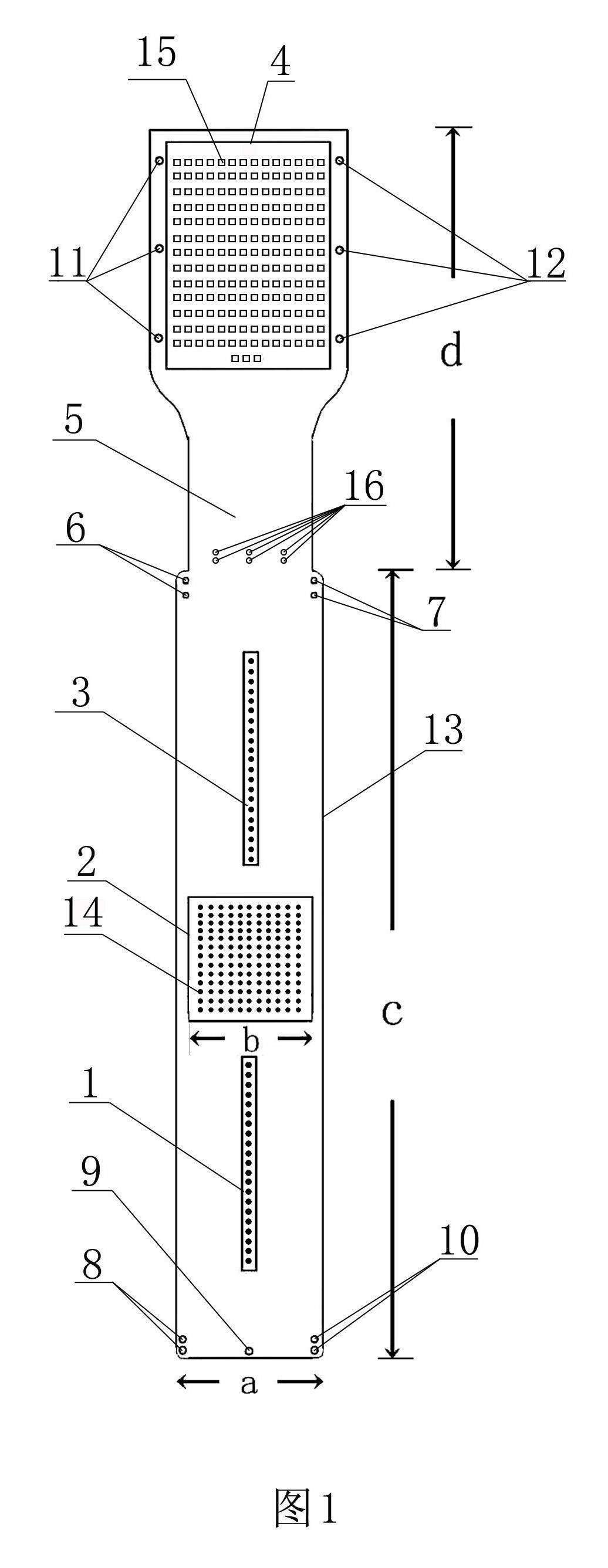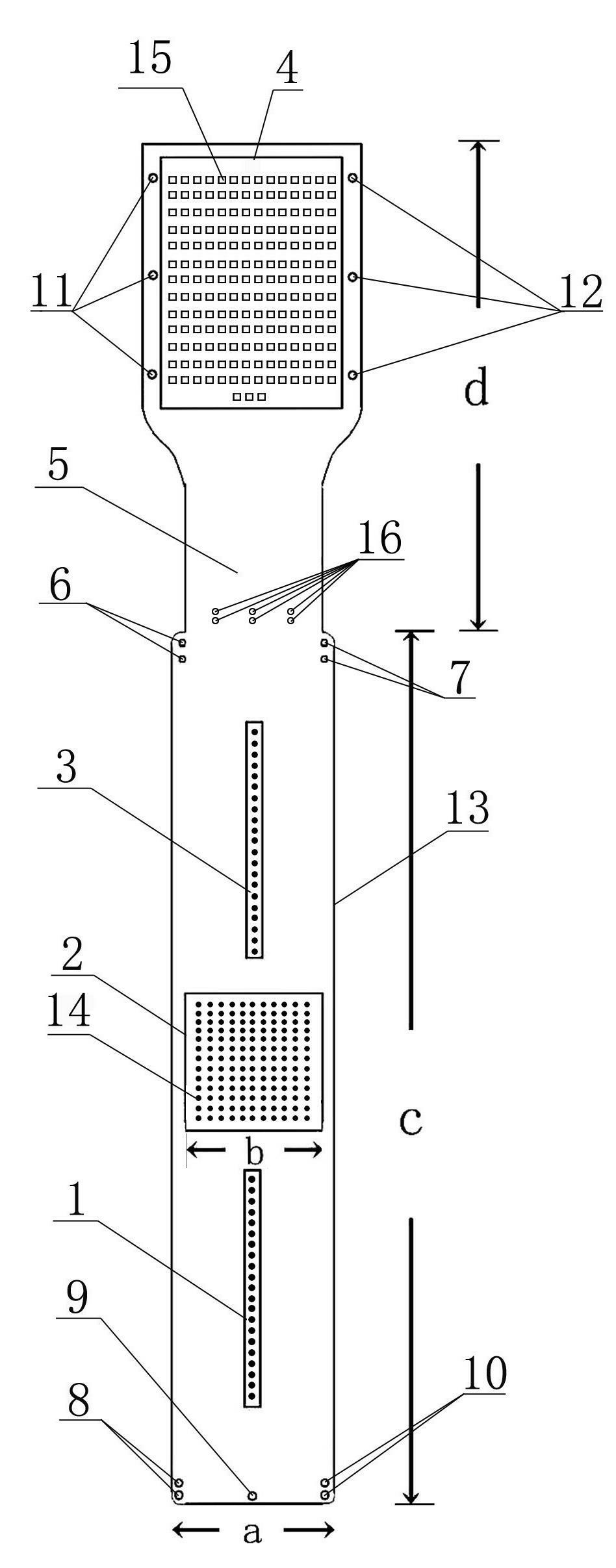Micro-electrode array chip before retina in field of artificial vision
A micro-electrode array and artificial vision technology, applied in ophthalmology treatment, etc., can solve problems such as poor closure of sclera incision, inability to stimulate other areas of the retina, etc., to prevent sympathetic ophthalmia, reduce the difficulty of welding, and prevent choroidal hemorrhage Effect
- Summary
- Abstract
- Description
- Claims
- Application Information
AI Technical Summary
Problems solved by technology
Method used
Image
Examples
Embodiment Construction
[0031] Examples see figure 1 , figure 2 As shown, a preretinal microelectrode array chip used in the field of artificial vision includes a chip substrate 13, wires embedded in the chip substrate 13, and microelectrodes that protrude from the surface of the substrate and form an array. It is characterized in that: The lower end edge of the chip substrate 13 is provided with at least two reserved holes 8, 9, and 10 for lower sutures, and the chip substrate 13 is sequentially arranged with a micro-electrode arrangement lower area 1, a micro-electrode arrangement middle area 2, and a micro-electrode arrangement area. Electrode arrangement upper area 3, base narrowing area 5 and base widening area 4, said chip base 13 has at least three sets of two reserved holes 16 for scleral incision sutures respectively at the lower end adjacent to base narrowing area 5, two of which are At least two upper suture reserved holes 6, 7 are respectively opened on the edge, and outer suture reser...
PUM
 Login to View More
Login to View More Abstract
Description
Claims
Application Information
 Login to View More
Login to View More - R&D
- Intellectual Property
- Life Sciences
- Materials
- Tech Scout
- Unparalleled Data Quality
- Higher Quality Content
- 60% Fewer Hallucinations
Browse by: Latest US Patents, China's latest patents, Technical Efficacy Thesaurus, Application Domain, Technology Topic, Popular Technical Reports.
© 2025 PatSnap. All rights reserved.Legal|Privacy policy|Modern Slavery Act Transparency Statement|Sitemap|About US| Contact US: help@patsnap.com



